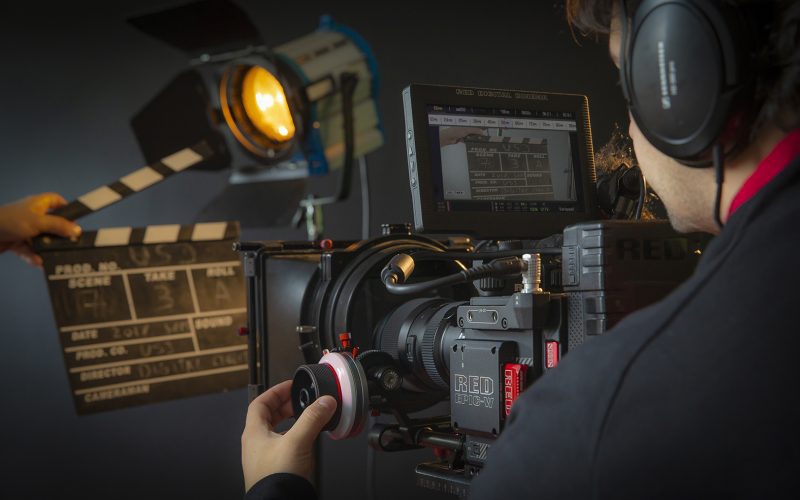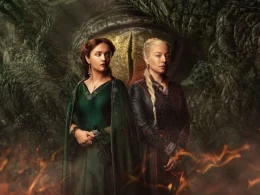Introduction
In recent years, digital technology has become a crucial part of filmmaking. It is changing how stories are told and experienced. From writing scripts to finishing films, digital tools are reshaping cinema. This article looks at the impact of digital technology on filmmaking, highlighting important changes and what they mean for the future.
The Evolution of Filmmaking
Filmmaking has come a long way, thanks to new technology. Each advancement, like sound, color, and digital cameras, has opened up new creative options. Today, digital technology is at the center of filmmaking, giving filmmakers new tools to express their ideas.
Digital Cameras and Filmmaking
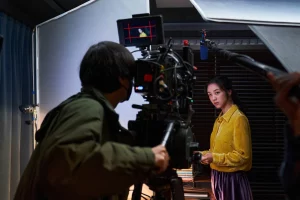
The switch from analog to digital cameras was a game-changer. Digital cameras have made filmmaking easier and cheaper, allowing more experimentation. With high-definition (HD) and 4K cameras, filmmakers can create stunning visuals. This change has opened doors for independent filmmakers, enabling them to make high-quality films without huge budgets.
Visual Effects and CGI
Digital technology has also transformed visual effects (VFX) and computer-generated imagery (CGI). Filmmakers can now create incredible worlds and characters that were once impossible. Movies like “Jurassic Park” and “Avatar” showcase how digital technology has expanded creative possibilities.
Virtual Reality and Augmented Reality
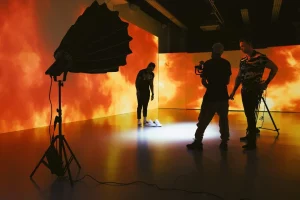
Virtual reality (VR) and augmented reality (AR) are new technologies that are starting to influence filmmaking. VR offers immersive experiences, allowing viewers to feel part of the story. Filmmakers are experimenting with VR to create interactive films. AR enhances storytelling by adding digital elements to the real world, providing fresh perspectives.
Improved Production Efficiency
Digital tools have greatly improved production efficiency in filmmaking. With technology, filmmakers can create virtual sets and use 3D modeling to plan scenes. This allows for better visualization of complex shots before filming starts. Virtual reality (VR) and augmented reality (AR) are also becoming popular in pre-visualization, giving directors and cinematographers a clear view of how a scene will look. By using these tools, filmmakers can save time and resources, reducing the chances of costly mistakes during production.
Digital Distribution and Streaming
Digital technology has also changed how films are shared and watched. Streaming platforms like Netflix, Amazon Prime, and Disney+ allow audiences to access a vast library of films anytime. This shift has challenged traditional cinema and pushed filmmakers to adapt to new ways of distributing their work.
Streamlined Production Processes
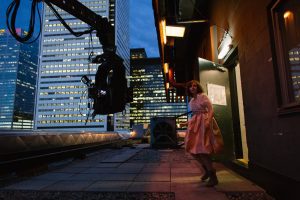
1. Pre-Production and Planning
Digital tools have made pre-production easier for filmmakers. They can create detailed storyboards and animatics with software, helping teams work together better and making shooting smoother. Tools like Celtx and ShotPro help filmmakers visualize their projects before filming.
2. Editing and Post-Production
Digital editing software has greatly improved the editing process. Programs like Adobe Premiere Pro and Final Cut Pro are user-friendly. Filmmakers can quickly experiment with different cuts and effects, making post-production more creative and efficient.
Artificial Intelligence in Filmmaking
Artificial intelligence (AI) is also playing a bigger role in filmmaking. AI helps with various tasks, from analyzing scripts to editing films. Machine learning can analyze audience preferences, helping filmmakers tailor their content. AI tools are also being developed for post-production tasks like color grading and visual effects, allowing filmmakers to focus more on creativity.
The Influence of Artificial Intelligence
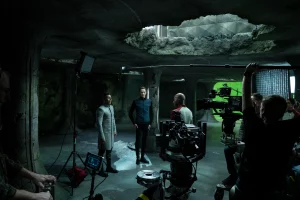
Artificial intelligence (AI) is becoming more important in filmmaking. It helps with many tasks, from writing scripts to editing movies. AI tools can analyze large amounts of data to see what audiences enjoy. This helps filmmakers create stories that resonate with viewers. For example, some software can suggest plot ideas or character changes based on successful films.
In post-production, AI is used for tasks like video editing, adjusting colors, and designing sound. This allows filmmakers to spend more time on creativity and less on technical work. As AI technology continues to improve, its role in filmmaking will likely grow, changing the creative process even more.
Changing Distribution Models
1. The Rise of Streaming Platforms
Streaming services like Netflix and Amazon Prime have changed how films are shared. Filmmakers can now reach global audiences without traditional theater releases. This shift provides more access for viewers and lets filmmakers explore new storytelling styles.
2. Crowdfunding and Independent Films
Digital technology has also benefited independent filmmakers through crowdfunding platforms like Kickstarter and Indiegogo. These platforms allow creators to raise money directly from their audience, reducing reliance on traditional studios. This approach enables unique stories to be told and showcases a wider range of experiences.
The Role of Data Analytics
Data analytics is another significant change brought by digital technology. Filmmakers can now analyze audience preferences and trends using big data. This information helps them make informed decisions about casting, marketing, and distribution strategies. For example, platforms like Netflix use viewer data to recommend films and even to decide which projects to fund. By understanding what audiences want, filmmakers can create more appealing content and increase their chances of success.
Audience Engagement and Interaction

1. Social Media and Marketing
Social media is now essential for filmmakers to connect with their audience. Platforms like Instagram and TikTok help filmmakers promote their work, share behind-the-scenes content, and engage directly with fans. This interaction builds community and enhances audience engagement.
2. Interactive Storytelling
Digital technology has made interactive storytelling possible. Projects like “Black Mirror: Bandersnatch” let viewers influence the story. This approach encourages participation, making the film experience more engaging.
The Globalization of Filmmaking
Digital technology has helped filmmaking go global. Filmmakers can easily collaborate across countries using digital tools. This has led to many international co-productions, allowing diverse stories to reach larger audiences. The ability to shoot and share films digitally helps stories from different cultures gain visibility, allowing viewers to enjoy a broader range of films.
The Rise of Mobile Filmmaking
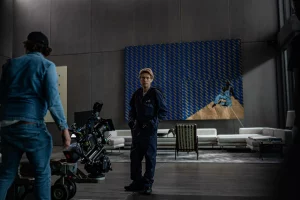
Smartphones with high-quality cameras have made filmmaking accessible to many. Mobile filmmaking is becoming popular as people can create films without expensive equipment. Apps like Filmic Pro and Adobe Rush offer powerful editing tools for phones. This trend allows anyone with a smartphone to tell their stories, and platforms like YouTube and TikTok showcase these creative films.
Enhanced Accessibility and Inclusion
Digital technology is also enhancing accessibility and inclusion in filmmaking. With the rise of online platforms, aspiring filmmakers from diverse backgrounds can share their stories without the barriers of traditional gatekeeping. This democratization of filmmaking allows for a wider range of voices and perspectives, enriching the cinematic landscape. Moreover, advancements in tools for editing and production have become more affordable and user-friendly, enabling more people to participate in the filmmaking process. As a result, audiences can enjoy a richer array of films that reflect varied experiences and cultures, fostering greater empathy and understanding within society.
Challenges and Opportunities
While digital technology brings many benefits, it also poses challenges. Filmmakers must adapt quickly to new tools and trends. The rise of digital platforms has increased competition, with many filmmakers vying for audience attention.
However, these challenges come with exciting opportunities. Digital technology empowers filmmakers to reach wider audiences and explore innovative storytelling. It encourages collaboration, blending traditional filmmaking with digital creativity for unique cinematic experiences.
The Future of Filmmaking
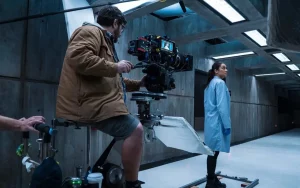
As technology continues to evolve, the future of filmmaking looks bright. We can expect to see even more innovations, such as advanced AI tools for scriptwriting and virtual reality experiences that immerse viewers in the story. Additionally, the rise of blockchain technology may change how films are funded and distributed, ensuring fair compensation for creators. As these technologies develop, they will likely reshape the filmmaking landscape, opening up new possibilities for storytellers and audiences alike.
The future of filmmaking looks bright as digital technology continues to advance. Emerging technologies like AI-driven content creation, blockchain for rights management, and advanced motion capture will further transform the industry. Filmmakers will keep pushing creative boundaries, using digital tools to tell compelling stories that resonate with global audiences.
Analysis Table: Key Advantages of Digital Technology in Filmmaking
| Aspect | Traditional Filmmaking | Digital Filmmaking |
| Cost | High equipment and film costs | Lower costs for equipment and production |
| Accessibility | Limited to big studios | Accessible to independent filmmakers |
| Editing Speed | Longer editing processes | Faster and more efficient editing |
| Visual Effects | Limited by physical effects | Advanced CGI and VFX capabilities |
| Distribution | Theatrical releases only | Multiple online platforms available |
| Viewer Engagement | Passive viewing experience | Interactive storytelling possibilities |
Comparative Table: Traditional vs. Digital Filmmaking
| Feature | Traditional Filmmaking | Digital Filmmaking |
| Cinematography | Film-based cameras | Digital cameras |
| Editing Process | Linear editing | Nonlinear editing |
| Visual Effects | Practical effects | Digital effects |
| Distribution Channels | Theatrical, DVDs | Streaming, digital release |
| Audience Interaction | Passive | Active (e.g., VR, interactive films) |
Conclusion
In conclusion, digital technology is not just changing the future of filmmaking it is shaping it. By embracing these advancements, filmmakers can unlock new possibilities, redefine cinematic storytelling, and connect with audiences in profound ways. As we move forward, the fusion of creativity and technology will continue to drive the evolution of the film industry, paving the way for a new era of digital cinema.






